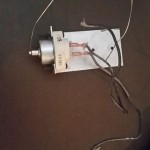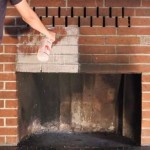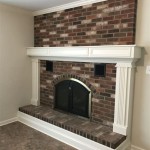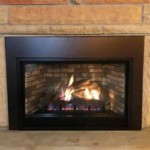Converting Gas Logs to a Wood-Burning Fireplace: A Comprehensive Guide
Many homeowners enjoy the aesthetic and warmth provided by a fireplace. Gas logs offer a convenient and low-maintenance alternative to traditional wood-burning fireplaces. However, some individuals may prefer the authentic experience, aroma, and higher heat output of a wood-burning fire. Converting a gas log fireplace back to a wood-burning one is a feasible project, but it requires careful planning, adherence to safety regulations, and potentially professional assistance, depending on the existing fireplace setup and local codes.
This article provides a comprehensive guide to converting a gas log fireplace to a wood-burning fireplace, outlining the necessary steps, considerations, and potential challenges involved in the process. It is crucial to emphasize that this conversion is not a simple swap and involves restoring the fireplace to its original, potentially out-of-compliance, state. Prior to commencing any work, consulting with a qualified chimney sweep, HVAC professional, and local building authorities is strongly recommended.
Assessing the Existing Fireplace and Chimney
The first and most critical step in converting a gas log fireplace back to wood-burning is a thorough assessment of the existing fireplace and chimney system. This inspection will determine the fireplace's suitability for burning wood and identify any necessary repairs or modifications. Areas of focus include:
Chimney Condition: The chimney's primary function is to safely vent combustion byproducts, including smoke, gases, and creosote. A professional chimney sweep should inspect the chimney flue for cracks, deterioration, or obstructions. Creosote buildup is a significant fire hazard associated with wood-burning fireplaces and must be removed. If the chimney liner is damaged or missing, it must be repaired or replaced with a liner suitable for wood-burning. Common liner materials for wood-burning fireplaces include stainless steel and clay tiles.
Firebox Condition: The firebox is the chamber where the wood is burned. Check for cracks, spalling (flaking), or other damage to the firebrick lining the firebox. Firebrick protects the surrounding masonry from the intense heat of the fire. Damaged firebrick should be repaired or replaced to ensure structural integrity and prevent heat transfer to combustible materials in the surrounding walls.
Damper Functionality: The damper is a metal plate located in the chimney that controls airflow. It must open and close properly to allow smoke to escape when the fireplace is in use and to prevent drafts when the fireplace is not in use. A rusted, warped, or otherwise damaged damper should be repaired or replaced. An airtight damper is crucial for energy efficiency, preventing heat loss up the chimney when the fireplace is not in use.
Clearances to Combustible Materials: Ensure that the fireplace and chimney meet the required clearances to combustible materials, such as wood framing, drywall, and insulation. These clearances are dictated by local building codes and are designed to prevent fires. If the clearances are insufficient, modifications may be necessary, such as installing heat shields or increasing the distance between the fireplace and combustible materials.
Fireplace Dimensions: The size of the firebox will dictate the size of the logs that can be burned safely. Overloading the firebox with too much wood can create excessive heat and increase the risk of a chimney fire. Consult the fireplace manufacturer's specifications or a qualified professional to determine the appropriate log size for the firebox.
If the initial assessment reveals significant damage or non-compliance with safety regulations, the conversion project may require extensive repairs or modifications, potentially increasing the cost and complexity. In some cases, it may be more cost-effective to explore alternative heating options or consider installing a new, code-compliant wood-burning fireplace.
Removing the Gas Logs and Gas Line
Once the fireplace and chimney have been thoroughly inspected and deemed suitable for wood-burning, the gas logs and gas line must be removed safely. This process involves several steps:
Turn Off the Gas Supply: Locate the gas shut-off valve for the fireplace, typically located near the fireplace or in an adjacent room. Turn the valve to the "off" position to completely cut off the gas supply to the fireplace. It is highly recommended to have a qualified gas technician perform this work, especially if you are not familiar with gas line safety procedures.
Disconnect the Gas Line: Carefully disconnect the gas line from the gas log assembly. Use appropriate tools to loosen the fittings and ensure that the gas line is completely disconnected. Cap the gas line with a threaded cap that is specifically rated for gas lines. This will prevent any accidental gas leaks in the future. Again, a qualified professional should perform this step.
Remove the Gas Logs and Burner Assembly: Carefully remove the gas logs and burner assembly from the firebox. Discard these components according to local regulations. Some municipalities may have specific disposal requirements for gas appliances.
Clean the Firebox: Thoroughly clean the firebox to remove any residual debris, soot, or ash from the gas logs. A wire brush and vacuum cleaner can be used to clean the firebox effectively. This ensures a clean surface for burning wood and prevents any lingering gas odors.
After removing the gas logs and gas line, it is essential to have a professional gas technician inspect the capped gas line to ensure that it is properly sealed and safe. This will provide peace of mind and prevent any potential gas leaks.
Installing Wood-Burning Accessories and Ensuring Compliance
After removing the gas logs and thoroughly cleaning the firebox, the final step involves installing necessary wood-burning accessories and verifying compliance with local building codes and safety regulations. These accessories enhance the functionality and safety of the wood-burning fireplace.
Install a Fireplace Grate: A fireplace grate elevates the wood off the firebox floor, allowing for better airflow and more efficient combustion. Choose a grate that is the appropriate size for the firebox and made of durable materials, such as cast iron or steel. The grate should be sturdy enough to support the weight of the logs.
Consider a Fireplace Screen or Doors: A fireplace screen or glass doors prevent sparks and embers from escaping the fireplace, reducing the risk of a fire. They also provide a barrier to prevent children or pets from getting too close to the fire. Choose a screen or doors that fit the fireplace opening securely and are made of fire-resistant materials.
Install a Carbon Monoxide Detector: Install a carbon monoxide detector near the fireplace to alert occupants to the presence of this odorless and deadly gas. Carbon monoxide is a byproduct of incomplete combustion and can be released into the home if the fireplace is not properly ventilated. Ensure the detector is functioning correctly and replace batteries regularly.
Verify Compliance with Building Codes: Consult with local building authorities to ensure that the fireplace meets all current building codes and safety regulations for wood-burning fireplaces. This may involve obtaining permits, undergoing inspections, and making necessary modifications to the fireplace or chimney. Compliance with building codes is crucial for ensuring the safety and legality of the conversion.
Maintain Proper Ventilation: Ensure that the fireplace damper is functioning properly and that the chimney is adequately drafting. Poor ventilation can lead to smoke buildup in the home and increase the risk of carbon monoxide poisoning. A professional chimney sweep can inspect the chimney and recommend any necessary repairs or modifications to improve ventilation.
Safe Wood Storage: Store firewood away from the house in a dry, well-ventilated area. This reduces the risk of pests entering the home and prevents the wood from becoming damp, which can lead to inefficient burning and excessive smoke production.
Remember, safety is paramount: Never leave a fire unattended. Keep a fire extinguisher nearby. Always ensure proper ventilation and use seasoned (dry) wood for efficient burning and minimal smoke.
Converting a gas log fireplace to a wood-burning fireplace requires careful planning, meticulous execution, and a thorough understanding of safety regulations. By following these guidelines and consulting with qualified professionals, homeowners can safely and effectively restore their fireplace to its original wood-burning functionality, enjoying the warmth, ambiance, and authentic experience of a traditional wood fire.

Want To Convert Gas Wood Fireplace Full Service Chimney

Wood Fireplaces Gas Conversion That Counts

Want To Convert Gas Wood Fireplace Full Service Chimney

Gas To Wood Fireplace Conversion Overland Park Ks Firplace Service

Can A Wood Burning Fireplace Be Converted To Gas The Flame Company

Want To Convert Gas Wood Fireplace Full Service Chimney

Wood Burner Conversion New Jersey Fireplaces Kjb

Convert Gas Fireplace To Wood

Can You Convert A Gas Fireplace To Wood Burning Stove Direct Stoves

Wood To Gas Fireplace Conversion In Wisconsin Free Quote Badgerland Waesha
Related Posts








